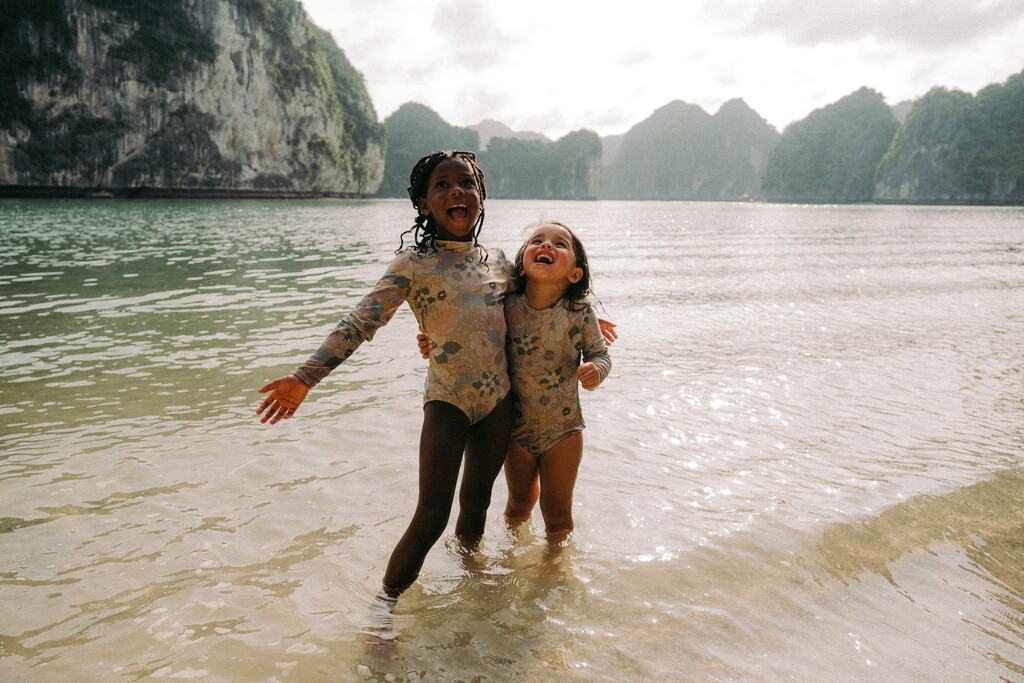You hear it everywhere these days – this new way of learning: Worldschooling. According to the National Home Education Research Institute, over 2 million families worldwide are choosing to worldschool or homeschool while traveling. And the best part? More worldschooling hubs and communities are popping up everywhere.
So, what is worldschooling? Can anyone do it? And how do you start?
In this article, we’re going to dive into all of that. Plus, I’ve interviewed real-worldschooling families to share their experiences!
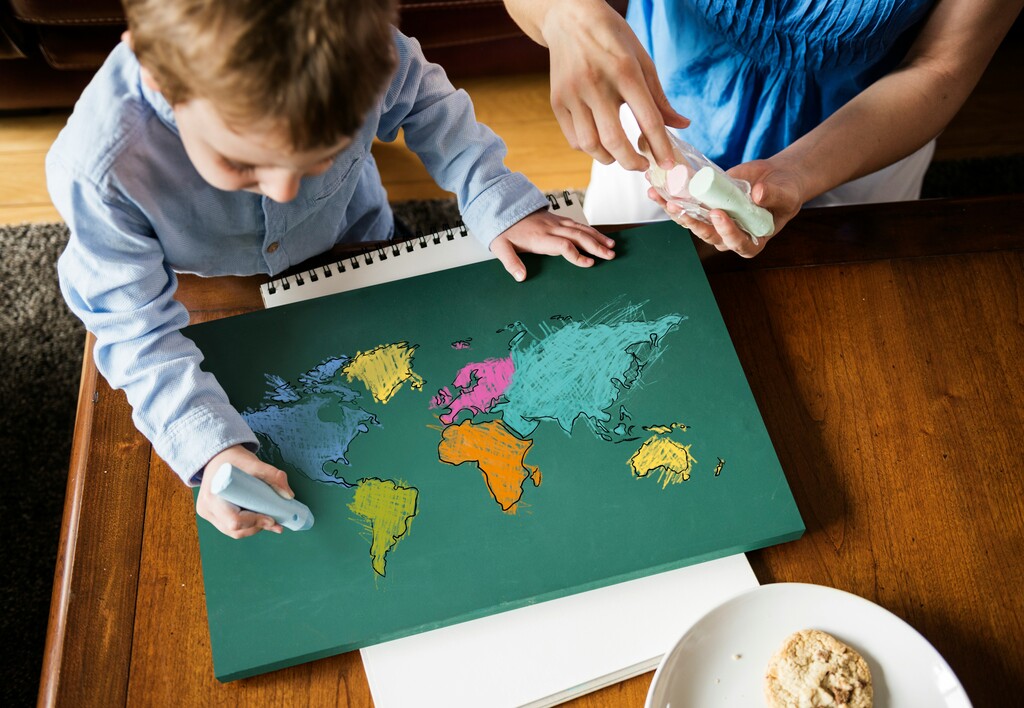
What is Worldschooling?
Worldschooling is a way of learning that combines education with world travel. It’s kind of like homeschooling because kids don’t go to a traditional school. But instead of staying in one place, families travel to different countries. Whether you’re in the United States, South America, or the Dominican Republic, the world becomes the classroom.
Kids learn by visiting historic sites and museums or through everyday experiences in new cultures – like shopping at local markets or discovering nature firsthand. Worldschooling allows families to explore different places together, turning every destination into a fresh learning adventure.
What makes Worldschooling different from traditional Education?
Worldschooling is like flipping traditional education upside down. Instead of sitting in a classroom all day, kids get to learn from the real world around them. History lesson? Let’s visit an actual castle or ancient ruins. Geography? How about hiking up a volcano to see it up close? It’s learning by doing, not just reading about it in a textbook.
Unlike traditional schools, there’s no set schedule. Worldschooling is flexible, and every day can be different. One day might be about exploring a rainforest, and the next, you’re learning math by figuring out currency exchanges at a local market. Plus, kids pick up life skills like how to adapt to new places, meet new people, and try new foods.
Worldschooling makes the whole world your classroom. No desks, no homework—just hands-on learning and loads of family time! Worldschooling provides a flexible education that adapts to each child’s individual needs and learning style.
The Origins and Evolution of Worldschooling
Worldschooling didn’t just pop up overnight—it’s been growing alongside homeschooling and the rise of digital nomadism.
Back in the 1970s, homeschooling started becoming popular in the U.S., with families wanting more control over their kids’ education. But it wasn’t until the internet and remote work exploded in the late 90s and early 2000s that worldschooling really took off. Suddenly, families realized, “Hey, we can travel AND teach our kids at the same time!”
Fast forward to 2025, and now around 2 million families are worldschooling or homeschooling while traveling, according to the National Home Education Research Institute.
And it’s only growing, thanks to the rise of remote work—the latest MBO Partners report shows that 18 million people are now living the digital nomad lifestyle, with about 4.5 million of them traveling with their families.

The Different Types of Worldschooling
Full-time vs. part-time worldschooling
When it comes to worldschooling, there are two main ways to go about it: full-time or part-time.
Full time worldschoolers are the families who are always on the move, turning every new place into a lecture. When picking a worldschooling destination, families usually think about how much cultural immersion they want for their kids.
On the other hand, part-time worldschoolers mix things up—they might travel for a few months a year and then return home for the rest of the time. They switch between world- and homeschooling.
Structured vs. unstructured approaches
Structured worldschooling is more like traditional homeschooling—there’s a set curriculum, schedules, and maybe even online classes. The kids know what subjects they’re tackling each day, whether they’re at a museum or sitting by the pool.
Then there’s the unstructured approach, which is way more flexible. Here, learning happens naturally, with no strict schedules. For families who travel, it’s important to find a balance between adventure and the learning environment.
Blended learning: using online courses and local resources
Blended learning in worldschooling is like getting the best of both worlds. Families use a mix of online courses and local resources to keep things flexible but still structured when needed.
Kids might do math lessons or local language classes online in the morning, and then in the afternoon, head out to explore a local museum or nature reserve. Using online tutoring can help cover subjects that might need a little more structure in the child’s worldschooling curriculum.
How Does Worldschooling Work? A Day in the Life of Real Worldschooling Families
In recent years, more nomadic families have turned to project-based learning for fun, hands-on ways to learn. But worldschooling is incredibly unique to each family. That’s why I talked to real worldschooling families to hear their experiences!
Roksana Skupiewska-Zealy is a fellow digital nomad mom who’s traveling the world with her husband, a retired Navy veteran, and their four amazing kids aged 5, 6, 8, and 9. After retiring as a travel X-ray technician in 2024, Roksana and her whole family embraced the nomadic lifestyle, combining adventure with the financial freedom they achieved through the FIRE movement.
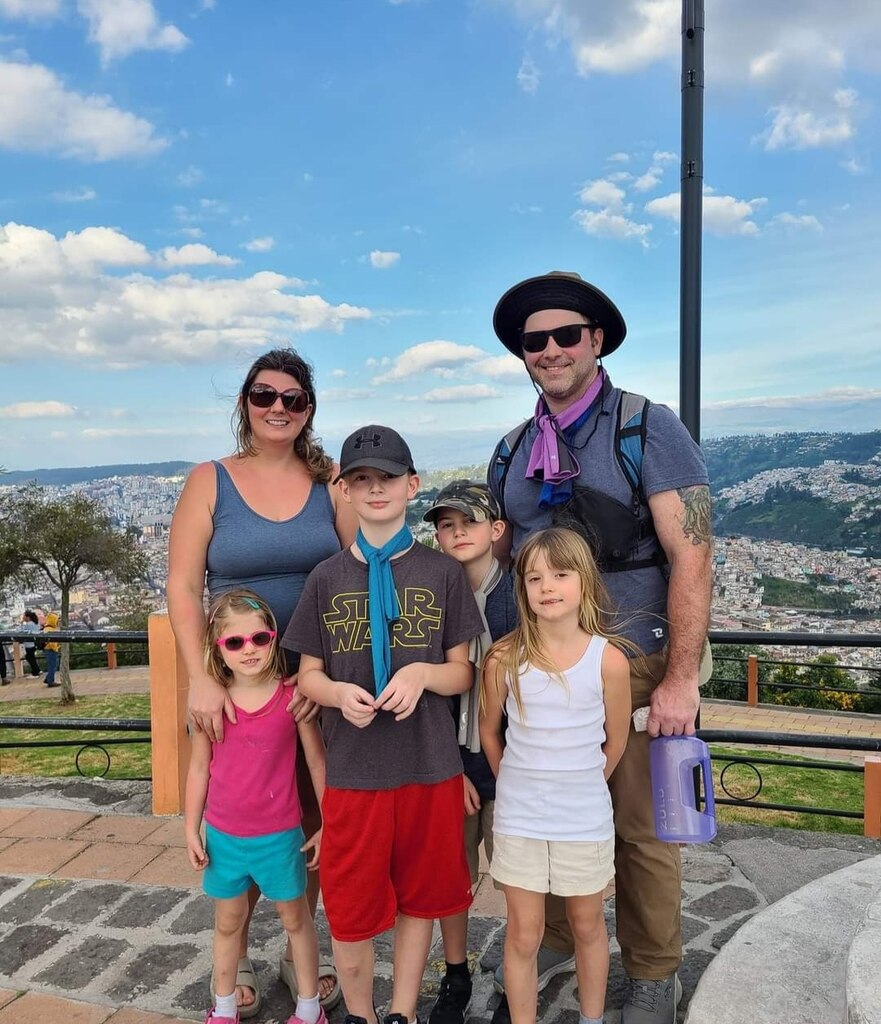
I asked Roksana, “What’s a typical day like for your family on the road?”
Roksana: “Our daily routine begins with a nourishing breakfast, followed by a focused session of homeschooling for the kids. Once they’ve completed their assignments, we take a break for lunch. Afternoons are often spent engaging in indoor activities if the weather isn’t favorable, but when the sun shines, we head out to explore nearby parks or beaches.
These outdoor excursions provide valuable opportunities for socialization, allowing the kids to connect with other children and form meaningful friendships. One of the benefits of our extended stays – typically three months or more – is that the kids have time to develop and nurture these relationships, creating a sense of community and belonging in each new location.”
Shay is a digital nomad single mom who’s traveling the world with her daughter, Willow. Shay not only navigates the challenges of parenting on the road but also helps entrepreneurs and influencers build authentic personal brands.

I asked Shay Lavelle, ‘Can you walk us through what a typical day looks like for you as a single digital nomad mom?’
Shay: “So, the best part of this lifestyle is never having to wake up to an alarm clock. It’s amazing. I usually stay up late to get some work done and have my free time after Willow goes to bed.
In the morning, she wakes up an hour or two before me. The night before, I prepare snacks and juice boxes for her. I set up a foldable table with a note saying “Good morning” and set out activities like painting, drawing, or a show to watch. She follows the instructions and is occupied for the first hour or two, allowing me to sleep in.
After I wake up, we’ll touch base, chit-chat, and have breakfast together. Then, I make my cacao and set her up with another activity, giving me an hour to work on messages or content creation. I’ve noticed that after an hour or two, she needs some connection time, which is a good time for me to take a break. We’ll go for a walk, as the beach is just a 15-minute walk away.
After our walk, we have more segmented time where she does some learning activities, and I do some work. In the afternoons, we sometimes nap together or go out. We might visit a place with a pool, where I can work and spend time with her in the sunshine.”
Is Worldschooling Legal?
In most countries around the world, homeschooling and worldschooling are legal. But there are exceptions. Here’s a list of countries where it’s banned or tightly regulated:
Germany: Homeschooling has been banned since 1919, with exceptions granted only in rare cases. Non-compliance can result in fines, custody battles, and even jail time.
Sweden: Homeschooling is technically allowed under very restrictive conditions, but in practice, it’s extremely difficult to obtain permission.
The Netherlands: Homeschooling is banned except for children with religious or philosophical objections to state education, but gaining an exemption is tough.
Spain: Although homeschooling isn’t explicitly banned, Spanish law requires children to attend formal education. Local authorities often take action against families who homeschool.
South Korea: Homeschooling is not legally recognized, and compulsory education laws make traditional school attendance mandatory.
Brazil: Homeschooling was legalized in 2021, but families must meet strict guidelines, including registering with the government and submitting to annual assessments.
Austria: Homeschooling is legal, but homeschooled children are required to take exams each year to prove they’re keeping pace with students in regular schools.
France: Homeschooling is legal but regulated. Families must declare their intent to homeschool annually, and children are subject to inspections to ensure compliance with the national curriculum.
For those traveling and homeschooling, it’s essential to understand these rules and stay compliant with the laws of each country. The Home School Legal Defense Association (HSLDA) is a great resource for homeschooling regulations across countries.
Tips to Stay Compliant While Worldschooling
Look up the laws: Before you visit a country, check its homeschooling rules.
Keep records: Many countries will want proof that your kids are actually learning, so keep a log of lessons, assessments, and activities.
Network with locals: Expat homeschooling groups often have great tips and can help you understand local laws better.
Stay flexible: In strict countries, consider enrolling your kids in an online international school or finding local education programs that meet legal requirements.

The Many Benefits of Worldschooling
Worldschooling comes with some pretty amazing benefits. Let’s dive in!
Cultural Awareness: When kids experience different cultures firsthand, they naturally become more open-minded. Social studies show that exposure to diverse environments can increase empathy. For example, a report by the British Council found that 95% of young travelers felt more tolerant after their trips!
Adaptability: Traveling means things rarely go as planned, and that’s a good thing! Kids get used to rolling with the punches. According to a Journal of Personality and Social Psychology study, people who travel often show higher adaptability and creativity.
Hands-On Learning: Forget boring textbooks! Worldschoolers learn by doing. Want to learn about ancient civilizations? Visit the pyramids. Need to study ecosystems? Explore the Amazon rainforest. A UNESCO report confirms that experiential learning is one of the most effective ways for children to retain information.
Confidence Boost: Navigating new places makes kids more confident. They become little problem-solvers, figuring things out on their own. In fact, research shows that kids who travel often score higher in problem-solving skills compared to their peers who stay put.
Tailored Education: Worldschooling means you can mix and match lessons based on your kid’s interests. No need to stick to a one-size-fits-all curriculum. A study from EdTech revealed that personalized learning can increase students’ engagement by up to 60%. Also, traveling through different regions gives kids the chance to experience a variety of education systems.
Family Time: Traveling together as a family creates memories that last forever. According to a survey by Project: Time Off, 75% of families feel closer after a shared vacation, and worldschooling families get that bonding time all year round!
Global Perspective: Kids get a head start in understanding the world. While most children learn about global issues from the news, worldschoolers experience them firsthand. Did you know that 70% of parents believe traveling abroad improves their child’s ability to understand global issues? (Education First Global Study).
Language Skills: Many worldschooling parents encourage multilingual learning, helping their kids pick up new languages while they explore the world. In fact, bilingual children can perform better academically, with studies showing they have improved cognitive function.
Real-World Problem Solvers: Worldschooling throws all kinds of challenges at kids, from navigating new places to figuring out different currencies. These little daily puzzles help boost their thinking skills.
Built-In Community: Worldschooling families often connect with other travelers. In popular worldschooling spots, families often meet up with other worldschoolers through homeschool co-ops or community groups. Think of it like a global village! According to a Worldschooling Research Study, 80% of worldschooling parents say their kids have made lifelong new friends on the road.
The Biggest Challenges of Worldschooling
Constantly Being on the Move: With the growth of the remote work lifestyle, long-term family travel has become way more doable for a lot of people. Living out of a suitcase sounds adventurous until you realize you’ve lost your kid’s favorite toy for the 5th time this month! Plus, research shows that kids need some stability. The American Academy of Pediatrics found that routines can improve children’s emotional well-being, so balancing adventure and routine is key.
Cost of living: Traveling can get pricey, and worldschooling isn’t always cheap. A survey by Wand’rly Magazine found that 40% of full-time traveling families struggle with budgeting. Flights, accommodations, and those spontaneous trips to fun tourist spots can add up fast! And let’s not even talk about the price of a last-minute flight during the holidays.
Legal Headaches: Not every country is thrilled with the idea of non-traditional schooling. Homeschooling laws vary, and in some places, it’s flat-out illegal (yikes!). The Global Home Education Exchange estimates that only about 63 countries have legal frameworks in place for homeschooling, so it’s important to stay on top of local regulations.
Socialization Worries: Will your kid grow up without friends? That’s a common concern. While worldschooling kids meet people on the road, it’s not the same as having a neighborhood buddy to hang out with every day. According to a Worldschooling Research Study, 47% of parents worry their kids miss out on consistent social connections.
Internet Struggles: Not every country has blazing-fast Wi-Fi. Trying to run an online business or get through a homeschool lesson when the internet keeps dropping can be maddening. In fact, a study by Speedtest ranks many popular digital nomad destinations as having slower-than-average internet speeds compared to the global standard.
Parental Burnout: Let’s be real—teaching your kids while traveling the world is a full-time job on top of parenting. Parenting Magazine reported that 60% of homeschooling parents experience burnout at some point. Add in international travel logistics, and it’s easy to feel overwhelmed.
Curriculum Confusion: There’s no one-size-fits-all when it comes to worldschooling. Some parents feel lost trying to pick the right curriculum or wondering if they’re covering everything their child needs. A Homeschool Legal Defense Association report found that 35% of homeschooling families struggle with finding the right resources.
Loneliness for Parents: Worldschooling might be fun for the kids, but for parents, it can feel isolating. A survey by NomadList found that 28% of traveling parents miss having a stable community and wish they had more adult friends to share the journey with.
Travel Fatigue: Believe it or not, you can get tired of traveling! Constantly moving from place to place can wear anyone out. A study by Booking.com found that 33% of digital nomads, including families, experience travel burnout and crave a “home base.”
Health Care Concerns: Traveling with kids means dealing with medical issues in unfamiliar places. Whether it’s finding a doctor who speaks your language or navigating a new healthcare system, it can be stressful. According to the Expat Health Survey, 40% of expat families find it challenging to get quality healthcare abroad.
Erin Michele Riska is a dynamic digital nomad mom who’s been worldschooling her tweens while running her own talent acquisition business. Since leaving Colorado in 2020, Erin and her family have been exploring the world, balancing adventure with remote work and education.
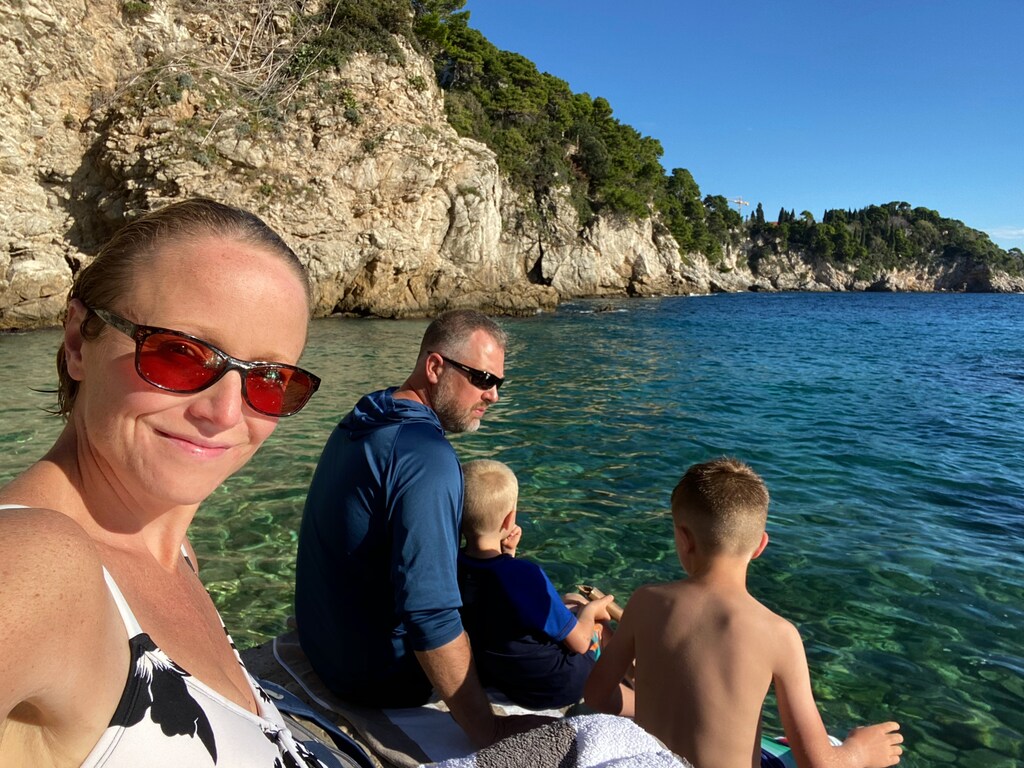
I asked Erin Riska, “What advice would you give to digital nomad families who are just starting to explore alternative education options and worldschooling?”
Erin: “Don’t prepare, begin. The hardest part is just going from 0 to 1. Many who are curious about world schooling or alternative education often spend enormous time researching, seeking a magic bullet to ease their minds. This can lead to spinning wheels rather than taking action. While some preparation is needed, it’s not as significant as people fear. Just go for it.
If you adopt an alternative approach to education, expect differences in learning outcomes, timing, and methods. Children may excel in one area and lag in another, but these will balance out over time. So, my two pieces of advice are: Don’t prepare, just begin with the mindset of “what’s the worst that could happen?” and be prepared for different learning outcomes. After four years, I can attest that these goals will be achieved, sometimes when you least expect it.
If something you try doesn’t work well, you have the autonomy to redirect, shift gears, and try something different. Take what you know, combine and adapt successful elements from various areas. Be adaptable, intentional, and a lifelong learner yourself. By modeling curiosity and a proactive approach to learning new things and finding resources, you instill those values in your kids. To raise lifelong learners, you need to be one yourself.”
👉 You might also find these articles interesting:
– The Digital Nomad Parents Survival Guide
– The 15 Best Digital Nomad Family Destinations
– 10 Tips How to NOT Succeed as a Full Time Travel Family
– Living in Thailand with Kids
– The Ultimate Guide to Full-Time Family Travel
The Importance of Deschooling
If your child has been attending a traditional school and is now switching to homeschooling or worldschooling, it’s not something that happens overnight. There’s an active process called “deschooling” that helps with the transition.
Moira Mills, a dedicated digital nomad mom who’s been roadschooling her son, London, while exploring the concepts of deschooling and unschooling. Raised on a homestead in rural Alaska and never attending traditional school herself, Moira’s upbringing inspired her to advocate for a more natural, joyful approach to learning, free from rigid educational systems.
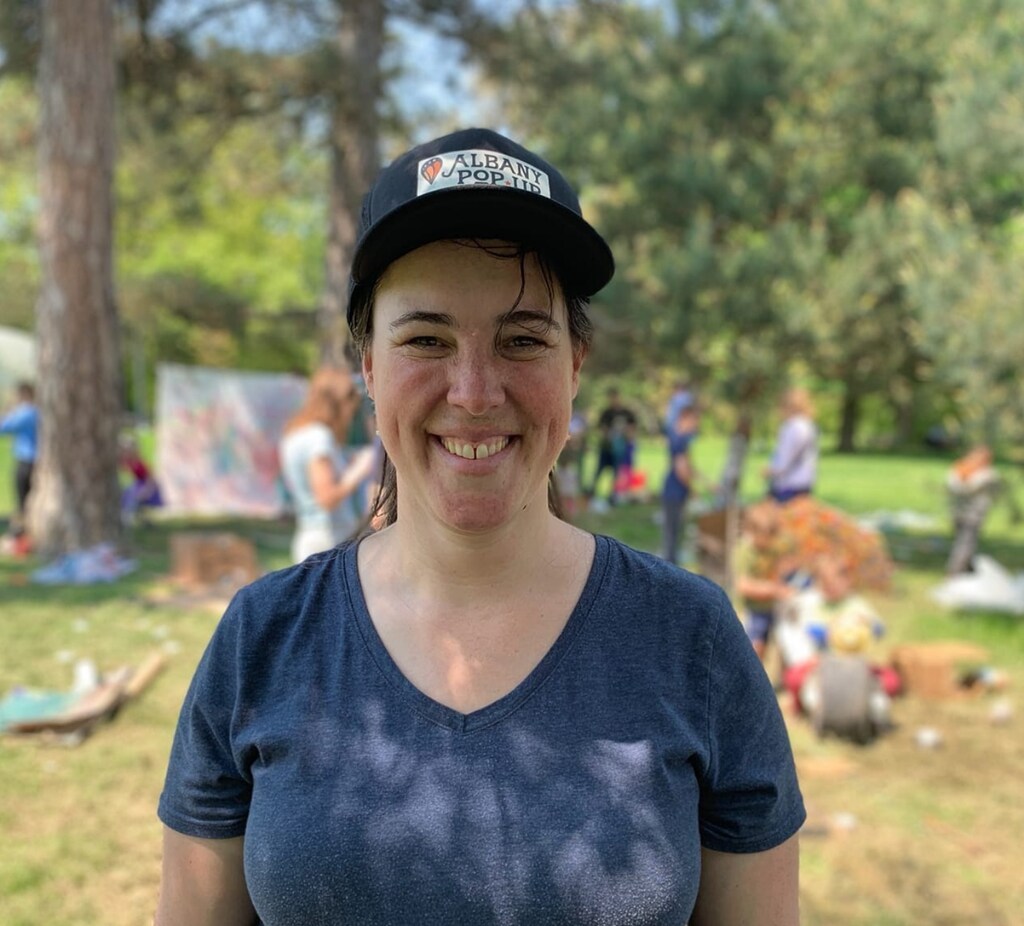
I asked Moira, “What exactly is deschooling, and why is it an important step for families transitioning from traditional schooling to unschooling?”
Moira: “Deschooling is about letting go of the traditional beliefs and practices tied to formal schooling so that you can embrace a more flexible, learner-centered approach. It’s essentially a way to “reset” your understanding of what learning can be like, moving away from the structured, rigid expectations of traditional education.
For families making the switch from traditional schooling to unschooling, deschooling is an essential step. It helps both parents and young children let go of the habits they picked up from regular school.
Traditional schooling often comes with strict rules about how and what should be learned, focusing on tests, grades, and a set curriculum. These systems can create a fixed mindset that can stifle the natural curiosity and enthusiasm that unschooling seeks to nurture.
During deschooling, families take a break from all formal educational methods and start to rediscover learning in a more organic way. It’s a time to reflect on how traditional schooling has shaped your views on education and adjust to the unschooling philosophy, which values learning driven by interests and real-life experiences.
The goal of deschooling is to create an environment where curiosity is encouraged and learning happens naturally through exploration and interaction. It helps families shift their mindset from viewing education as a series of tasks to seeing it as a lifelong, joyful journey. This transition makes it easier to fully embrace unschooling and enjoy the benefits of a more flexible, self-directed approach to learning.”
Worldschooling vs. Homeschooling vs. Unschooling
Worldschooling, homeschooling, and unschooling are all ways to teach kids. Each one has its own style. Homeschooling is pretty structured—it’s like doing regular school but at home, with a set curriculum.
Worldschooling, on the other hand, turns the world into a classroom, where kids learn through travel, visiting cool places, and picking up different languages as they go.
Then there’s unschooling, which is the most relaxed of all. It lets kids learn at their own pace, based on what they’re interested in, with no strict schedule or formal lessons.
Homeschooling works for families who like routine, worldschooling is great for those who love adventure, and unschooling suits families who want total freedom in how their kids learn.
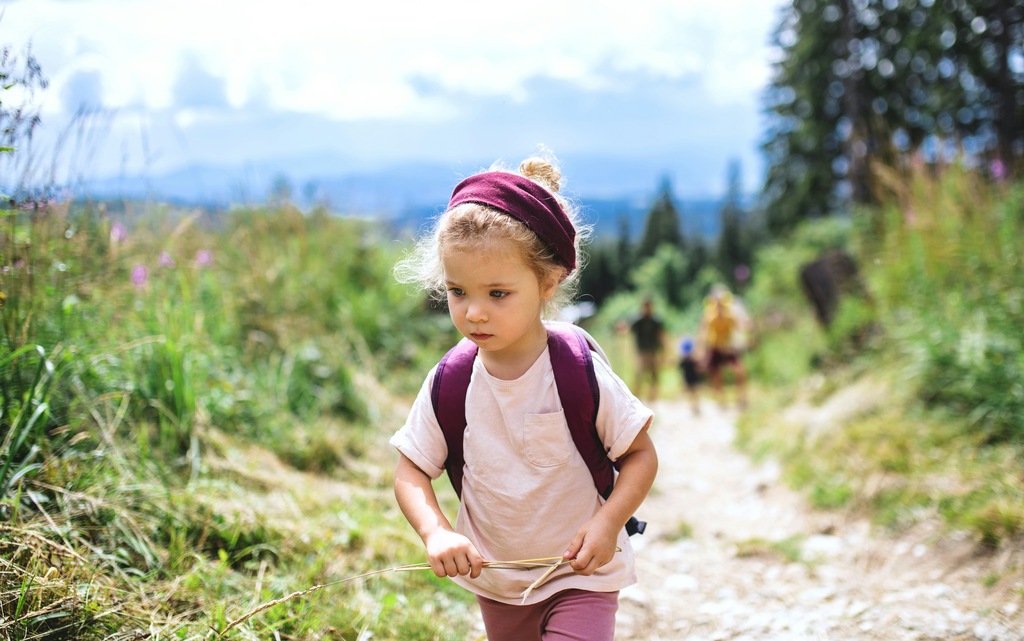
How to Start Worldschooling in 2025
Starting worldschooling in 2025 might feel overwhelming, but it’s easier than you think! Here’s a simple step-by-step guide to help you get going.
First, decide how much structure you want—do you want a set curriculum or a more flexible approach? There are tons of resources out there like online learning courses, worldschooling communities, and curriculums designed specifically for a learning experience on the go.
Next, start planning your travels with educational goals in mind—think about what you want your kids to learn from each destination. For example, history in Europe, wildlife in Africa, or marine biology in Southeast Asia.
Finally, connect with other worldschooling families online or in-person to get support and ideas.
Worldschooling Communities and Resources
There are vibrant worldschooling communities all around the world where families come together to share experiences and advice. You’ll find active groups on social media like Facebook’s Worldschoolers group, where over 69,000 members share tips and meet up while traveling. If you’re looking for online forums, Reddit’s Worldschooling Subreddit is a great place to ask questions and read about others’ experiences.
As for educational tools, platforms like Outschool offer tons of live, online classes for kids. Khan Academy is another excellent (and free!) resource that covers subjects from math to history. For a more tailored approach, Wolsey Hall Oxford offers worldschooling-friendly curriculums designed for home-educated students.
For families looking to settle in one place for a while but still live the worldschooling lifestyle, Boundless Life offers communities in various locations that combine travel, education, and remote work in a supportive environment.
Final Thoughts on Worldschooling
So, that’s worldschooling in a nutshell! It’s not just about learning while you travel; it’s about turning the whole world into your classroom.
And sure, there might be some challenges (hello, lost toys and dodgy Wi-Fi!), but the benefits? Totally worth it. More family time, hands-on experiences, and raising little global citizens—what’s not to love? So, if you’re dreaming of combining travel with education, why not give it a go?
When will you start worldschooling? What are your biggest concerns? Let me know in the comments!
Thank you for reading and for making me part of your day! Yours, Lulu

